The Lady is the Boss (掌門人) (1983)
Following the success of his film, My Young Auntie (長輩) (1981), Liu Chia-Liang makes a comeback with the film, The Lady is the Boss (掌門人) (1983). Compared to My Young Auntie (長輩) (1981), Kara Hui does not play a traditional servant making her way to the big city but is the Americanized daughter of the Wah Chiang Martial Arts Academy’s master. Unlike Liu’s earlier films, this film pays homage to the modernizing city of Hong Kong through cultural references and is one of the first films to use Cantonese instead of Mandarin.
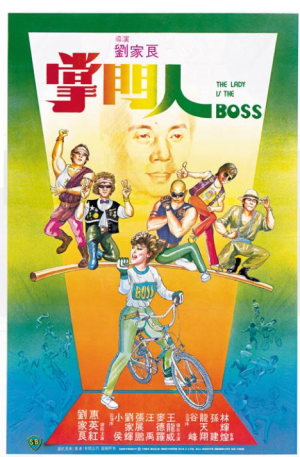
Image Source: Celestial Pictures Limited
Plot Summary
Hong Kong in the ’80s is at the wake of its transformation, but Wang Hsieh Yun, a kung fu master at Wah Chiang Martial Arts Academy, struggles to bring students to the school due to the lack of interest in “old school” Kung Fu. At the brink of shutting down the kung fu school, Chan Mei Ling, the daughter of the academy’s master, arrives from America to help revitalize the academy. However, her westernized ways clash with Wang’s traditional values and result in him leaving. Over time, Chan attracts students from a wide range of demographics, but also leads her quarrel with local gangs. As the conflict between Chan and local gangs worsen, Wang comes to rescue her and fights off the violent thugs. After the fight, Chan realizes Wang is the rightful leader for the academy and heads back home to the U.S.
A Breakdown of the Characters
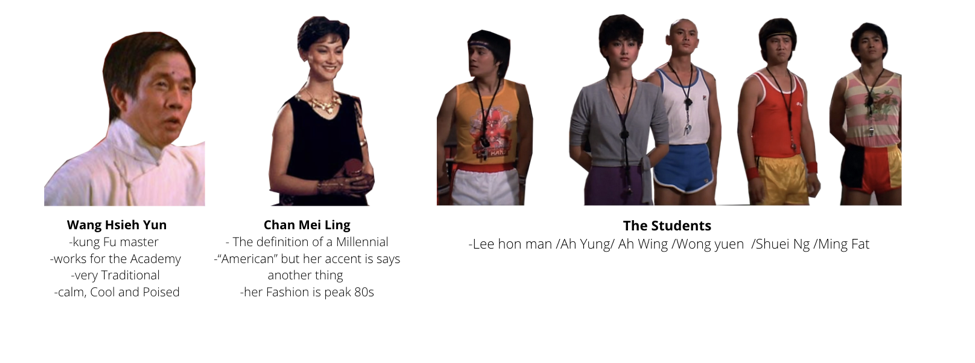
Who is Liu Chia-Ling?
Liu Chia-Ling was a renaissance man as he experimented with acting, producing, directing, and choreographing for Hong Kong’s film industry. Before his rise to fame, his roles were limited and he mostly focused on choreography for black and white films. Until 1950, Liu appeared in his first film, How Wong Fei-Hung Defeated Three Bullies with a Rod (黃飛鴻一棍伏三霸) (1953). By the ‘60s, Liu became one of Shaw Studio’s leading choreographers and developed a strong relationship with the legendary Chang Cheh. Between the ‘70s to ‘80s, Liu made his directorial debut at Shaw Brother’s Studio. Late into his career, he still worked within the film industry. In 2005 he was awarded ‘Best Action Choreography’ for the film Seven Swords (七劍) (2005). Sadly, Hong Kong lost a star in 2013, but Liu’s impact in the Hong Kong entertainment industry will be everlasting as he paved the way for stars ranging from Jackie Chan to Kara Hui.
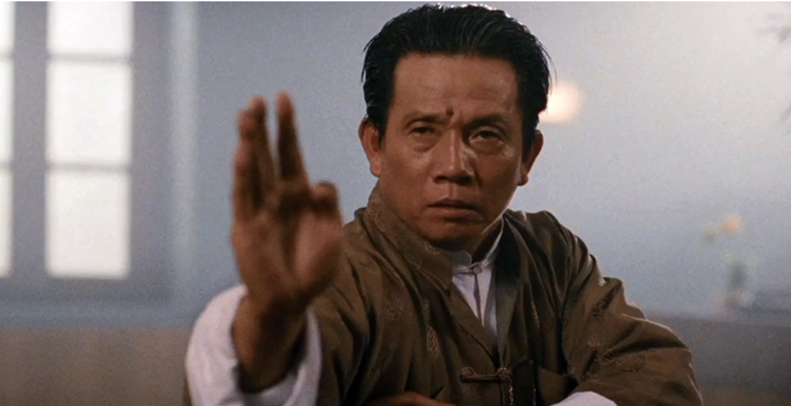
Image Source: https://www.fareastfilms.com/?feature_post_type=liu-chia-liang-a-retrospective
Modernizing Kung Fu
The tactic of modernizing Kung Fu is not unusual within the Martial Art genre. From this program, we have seen another film, The Golden Buddha (金菩薩) (1966), modernize Kung Fu by setting the film in modern-day society. Although this film lacks a solid plot and the acting is subpar, one cannot help but enjoy the fighting scenes, particularly the fighting scene at the disco. Audience members are left astounded as one witness Chan and her gang attempt to dance and have fun. However, moments later, they are incorporating kung fu into their dance moves to fight off gang members. What this film does well is not only reference Hong Kong’s pop culture but also offer a refreshing take on kung fu.
As mentioned before, the ‘80s observed a decline in appreciation for martial art films. However, through trial and error, viewers are able to appreciate a film that attempts to convey a sense of relatability. Compared to earlier martial art films that were based on ancient tales or set in the past, most of the film’s fighting scenes are set throughout various Hong Kong districts. This imposes a sense of familiarity amongst viewers and creates a particular bond between the viewer and film.
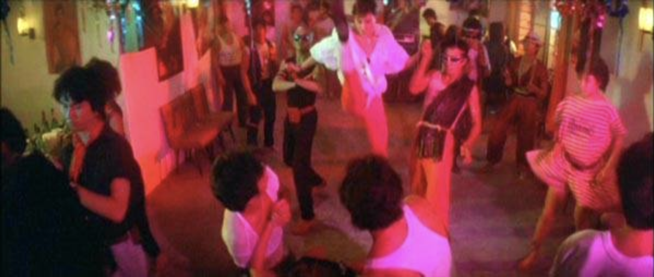
Image Source: Celestial Pictures Limited
Celebrating a New Era Through Fashion
Although this film claims to be part of the martial art genre, the fighting scenes do not amount to the eccentric costumes that steal the show and captivate viewers. This film praises the rise of a new era in Hong Kong and succeeds in conveying this message through fashion. According to Harper Bazar, the ‘80s was a decade of ‘bold style, colors, and silhouettes…”. With street style ranging from biker jackets to oversized padded blazers, this was the most eclectic decade in fashion. Similarly, in this film, audience members witness fashion trends such as neon colors, puffy shoulder tops, and spandex. It reflects the mindset of the ‘80s: individualism and self-expression. We watch Wang’s students transform from clones to having unique, varied personalities that are expressed through fashion. This reflects the film’s intention to not only be a source of enjoyment but celebrate a new age of thinking and expression.
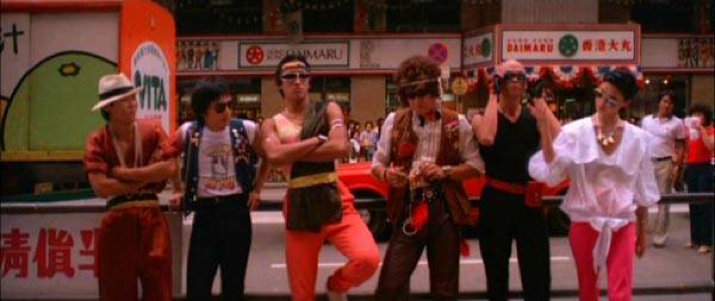
Image Source: Celestial Pictures Limited
By Ariana Heffner
Film footage supplied by Celestial Pictures Limited / 電影片段由天映娛樂有限公司提供
